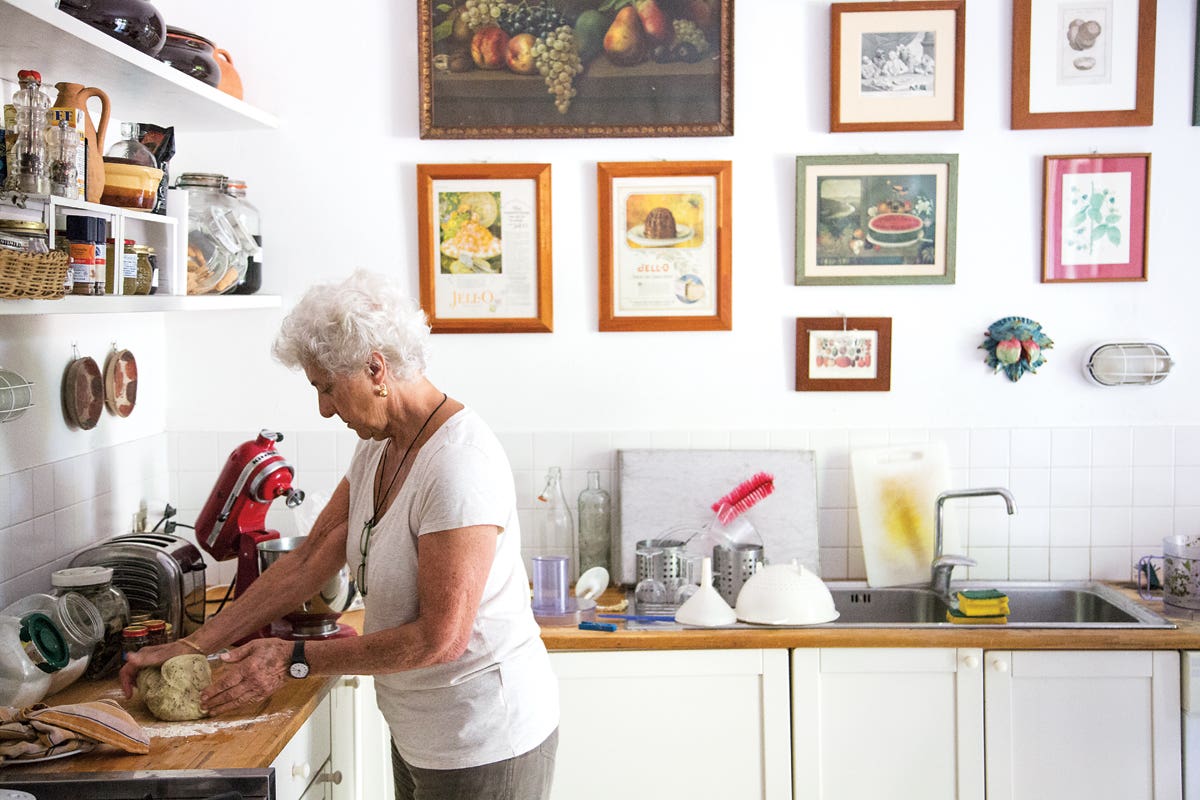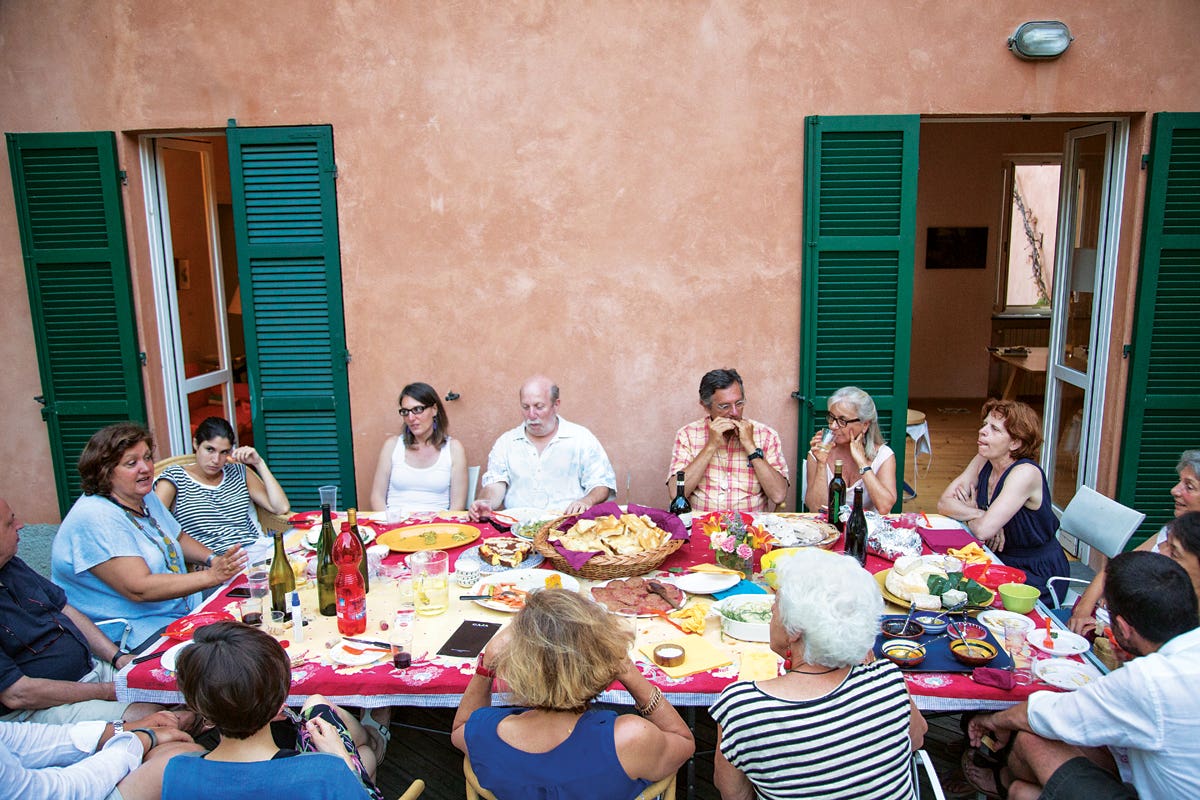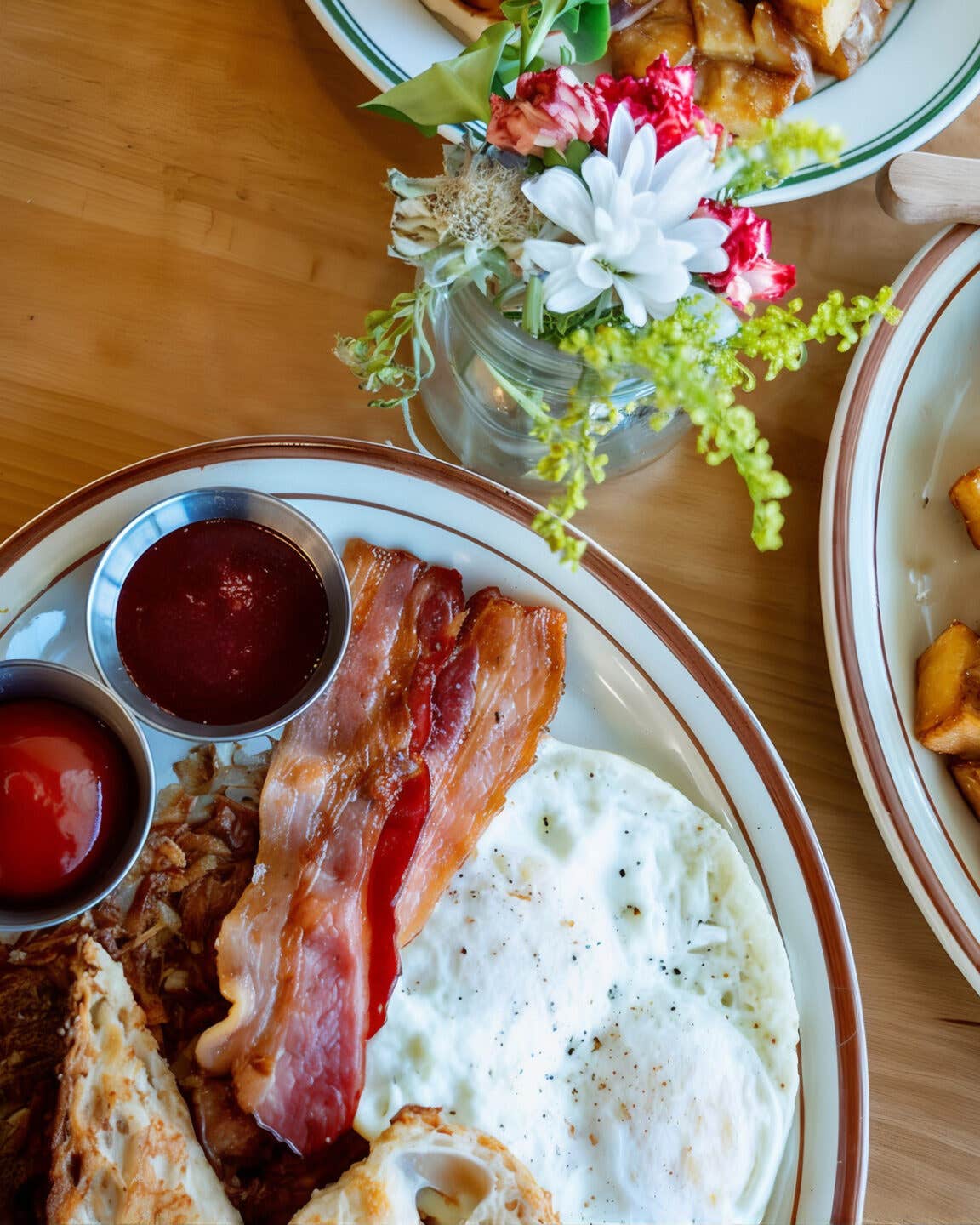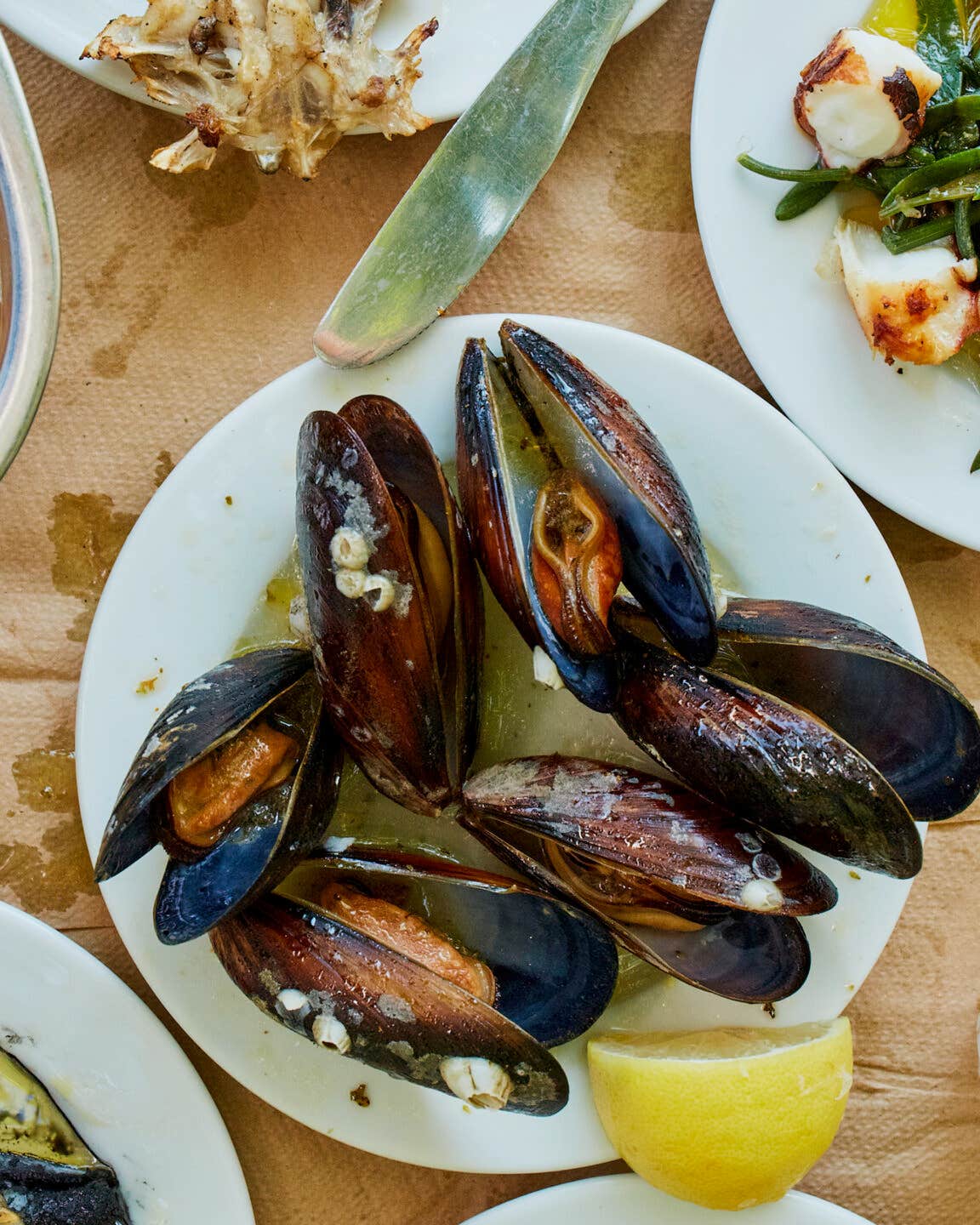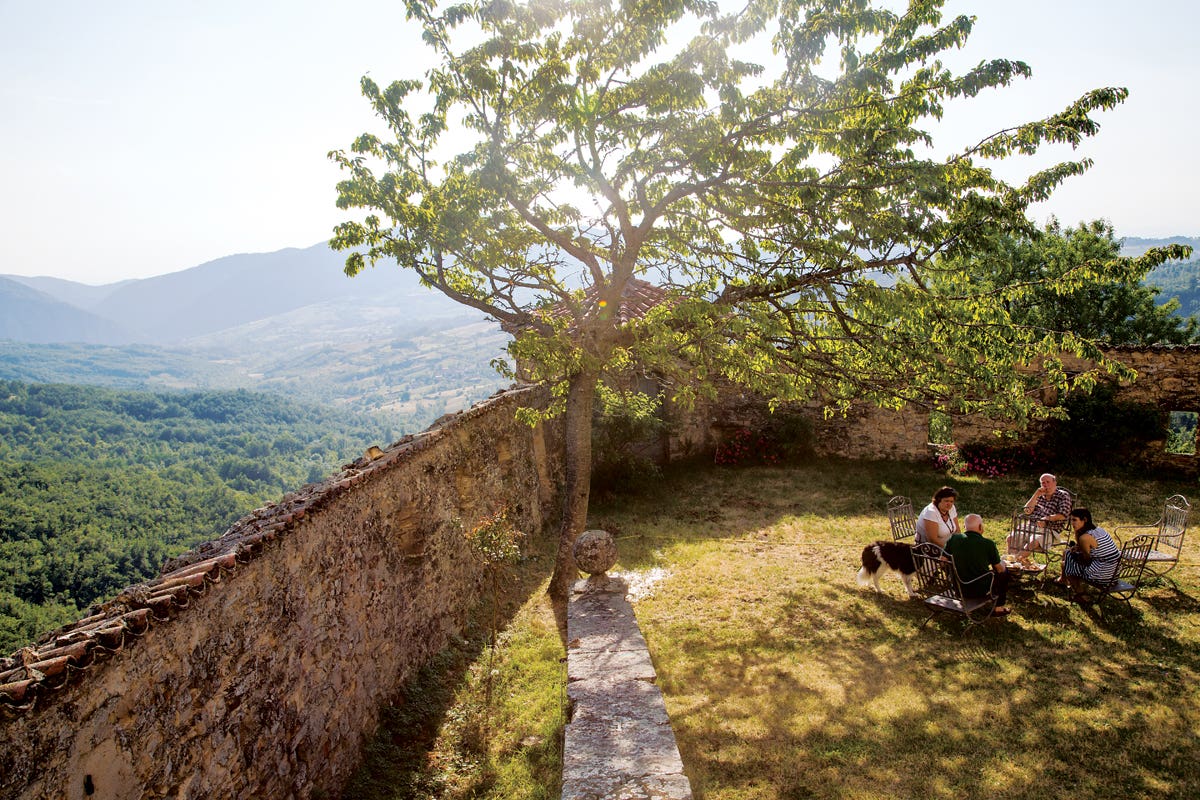
Feast of Life
A birthday celebration highlights the simple food and everyday pleasures of Italy’s Piedmont region
I'm clinging to the most stable thing on the back of a flatbed truck as we jostle our way up the hill on a dusty dirt road, peach tree branches smacking my face in steady rhythm. That thing happens to be Pipo, a border collie who is indifferent to the fingernails digging into the scruff of his neck. When the truck comes to a sudden stop, Pipo abandons me, leaping off with the grace of an Olympic gymnast dismounting a pommel horse, and I tumble to the ground. "Va bene?" asks his master, Maurizio Lugano, the peach farmer we've come to visit. As I wipe dust from my face and take a deep open-mouthed breath, I realize the air here doesn't just smell of peaches—it tastes of peaches. I nod. "Sí. Va bene."
I'm in northern Italy helping one of my family's oldest friends, Camilla Toniolo, prepare for her 60th birthday party. Camilla, brown-haired, garrulous, and loving, was born and raised in Milan but moved to the States in her 20s, later working for my mother, then a film editor. Camilla, who now works as a cooking teacher, and her husband, Harvey Waldman—and their son, Luca, since he was born—have been an extension of my family for as long as I can remember.
A few months earlier I'd received an invitation that included an old photo: Camilla, barely knee-high to a grasshopper, stands in Milan's Piazza del Duomo surrounded by her three older siblings, Paolo, Mici, and Daniela Toniolo. Her tiny fist is inside a packet of dried corn. Pigeons are in an ecstatic frenzy at her feet. I could identify with those pigeons; I've rarely been in a situation with Camilla when she wasn't feeding me. And I'm often cooing when she does.
The party wouldn't be in her Manhattan apartment, but in the village of Serravalle Scrivia in Italy's Piedmont region, where her family congregates each summer. The food and drink—cheese, fresh peaches (the reason for our visit to Maurizio's farm), zucchini, tomatoes, and, of course, wine (see "Perfect Pairings")—would be gathered from the surrounding towns. A local school cook would make pasta with mushrooms he'd foraged and dried the previous fall. There would be naps in hammocks and endless eating. Would I like to come a few days early and help prepare some of Piedmont's most beloved regional dishes, Camilla wrote.
She had me at cheese.
Located between the Alps and the Ligurian Apennines, Piedmont made its modern culinary mark in 1986, when, in response to a McDonald's opening in Rome, Carlo Petrini, a resident of the Piedmont town of Bra and now the head of Italy's Slow Food organization, balked and started a campaign to reclaim "the Italian way of life"—food grown from nearby farms, chemical-free harvesting practices, and traditional cooking. But Piedmont's culinary timbre was formed centuries ago. The region changed hands between the French and Italians numerous times after the 1500s, and many historians point out that, because of this, the cuisine here is heavily influenced by the French. It's peasant food, yes, but refined, and not shy about butter, cream, and cheese (see "The Cheeses of Piedmont"). It helps that the geography, a combination of flat plains and mountainous terrain, has plenty of pastures for grazing cattle, sheep, and goats.
Growing up, Camilla spent her summers in Serravalle Scrivia. Her grandparents had lived there during the war, baking bread in a woodburning oven, drinking fresh milk from their cows, and eating vegetables they grew themselves. When the family decided to sell part of the property in 1975, they kept several outbuildings, converting them into humble but charming residences, each with its own kitchen, interconnected by patios and staircases. That way family members could wander freely from one house to the next.
The morning after our visit to Maurizio's peach farm—the day before the party—every inch of the Toniolo compound is dedicated to food prep. All of Camilla's siblings and their families are pitching in. I shadow Daniela, a white-haired, tough-as-nails scientist, as she first kneads focaccia dough, fragrant with fresh sage picked from the garden, then heads outside to a downstairs patio to bake it in the woodburning oven. I leave in the hopes that I can help Camilla with her savory vegetable pies. But I'm sidelined by the smells emanating from each doorway I pass, such as the briny scent of anchovies back at Daniela's kitchen. Piedmont is landlocked, but its location on the salt route, which wound its way from the sea through Liguria to the north, brought anchovies to the area. In medieval times, salt was like currency, salt-packed anchovies a sign of wealth. Piedmont's most famous anchovy-based dish is bagna cauda, but that hot garlicky oil dip is generally served in the cooler months along with winter vegetables. For this summertime meal, Daniela has roasted fresh peppers with anchovies for a cold appetizer.
I force myself to continue on, but make it only as far as the door of Maddalena Bellorini, Mici's daughter, who is cooking peaches down to form the filling of a pie. The aroma of the caramelized fruit is punctuated by whiffs of braising veal, which Mici will chill, slice, and cover with a creamy tuna sauce for tomorrow's vitello tonnato. By the time I do make it to Camilla's kitchen, the vegetable pies she and Luca have made with ricotta, onion, sliced zucchini, and beaten eggs are already in the oven. And so, like a jangled bloodhound, I follow my nose to the focaccia baking in the outdoor oven.
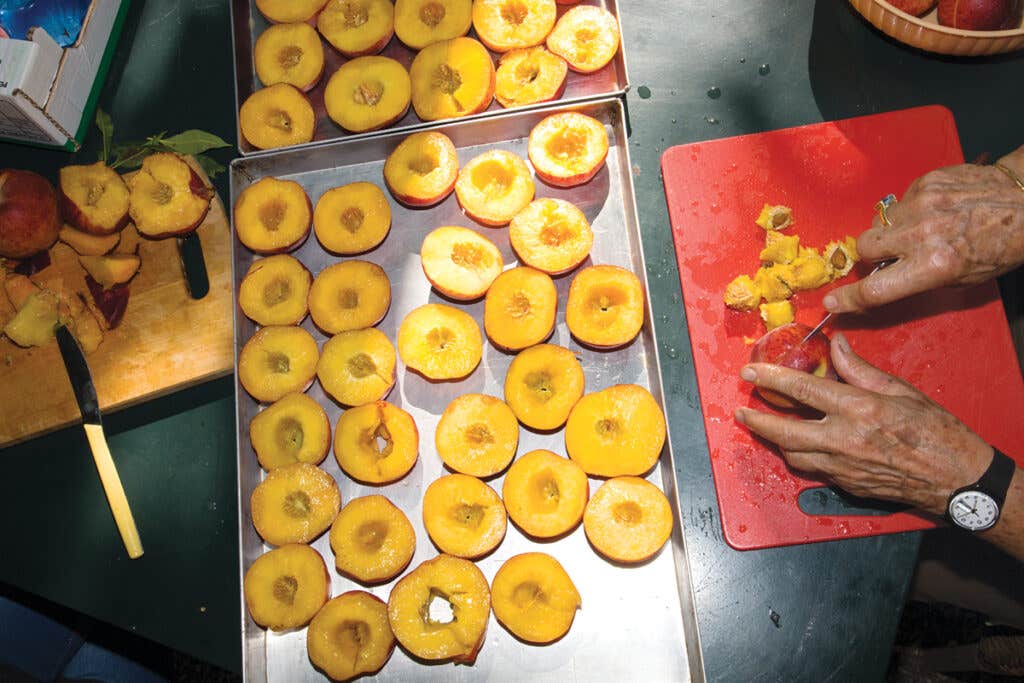
Where there was an empty table by the oven before, there is now a huge spread of cheeses, blood-red tomato slices, hunks of fresh focaccia, and ice-cold bottles of sparkling white wine. The remainder of the Toniolo clan materializes, and the rest of the day progresses like a series of freeze-frame images that I string together afterward in an e-mail back home to my fiancé, Dave. I help Daniela split and pit peaches in the dappled shade of a fig tree, juice sticking to my sundress. I fall asleep in the hammock, waking with a lattice imprint on my cheek. I make a quick run to a nearby goat farm to pick up a cheese with Camilla and meet Merlin, a goat the owner lovingly refers to as a stronzo, or, as Camilla translates, a "shithead." We return to an alfresco dinner of cherry tomatoes and fresh balls of mozzarella floating in water.
"Eat with your hands, no salt, no nothing," Camilla instructs me. The buffalo milk is grassy, cold, salty, the texture walking the perfect line between chewy and creamy. Little Lorenzo Bellorini, Camilla's grand-nephew, jets breathlessly onto the patio clutching a net and crows, "Farfalle! Farfalle!" I think, Pasta? And then he shakes out the net and a butterfly flies into the sky. Just like that, the name of my favorite pasta shape becomes clear.
The day of the party breaks hot and clear, and by midmorning the house is bustling. Placards are being made, tablecloths shaken out, the moscato-peach aspic jiggled to test firmness. As promised, Davide Gheezi, the local elementary school cook, has set up a burner in the garage where he'll make a dish of corzetti, silver-dollar-size rounds of pasta, with mushroom ragù, as well as a lemon-rosemary risotto. His helper is testing oil for sage leaves and zucchini blossoms, which he'll stuff with anchovies, lightly batter, and then fry. I jokingly ask Davide if this is how he cooks for the kids and he looks at me, confused. Camilla translates; his eyes brighten and he nods, "Ah, sí!"
Camilla's Birthday Celebration
The author, second from left, with friends at a birthday celebration for Camilla Toniolo, far left, in Serravalle Scrivia
Guests start to trickle in at midday. And before I know it, there's a crowd of 50 munching on crispy fried sage hot from the oil, salty wedges of cheese, and Camilla's savory pies. Mici's vitello tonnato is gone in seconds.
People rise to give speeches honoring Camilla. I can understand none of the Italian except for the call to toast, “Cin, cin!" at the end of each speech, but Camilla is crying tears of happiness, and, suddenly, so am I.
Afterward, we move upstairs for dessert—peach aspic, roasted peaches with amaretto, a peach tart, a peach cake—and as we all sink into chairs, Stephano Guadagni and Roberta Zunuso bring out their guitars and start strumming the opening chords to "Pack Up Your Sorrows." Camilla and Allesandro Zanuso join in, singing in English, and I learn the quartet isn't random. The four met in Milan as teenagers and formed a political singing group that performed in the streets in the 1970s. We're at their impromptu reunion. I head inside for water and when I return, the whole crowd has moved on to Dylan's "The Times, They Are a-Changin'."
Camilla's husband, Harvey, throws his arm around me and belts out, "Come mothers and fathers, throughout the land," and there they are, the mothers and fathers, surrounded by their children and their children's children, Luca with his cousin on his lap, Camilla holding her mother's hand. I think of my parents back home, of Dave, of our future family together, and I catch Camilla's eye and raise a glass. Va bene.
Keep Reading
Continue to Next Story
